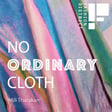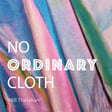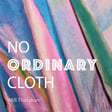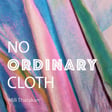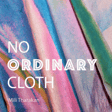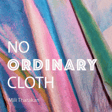
Ep 3: Knitting Mathematics and Musical Textiles with Sophie Skach
Whether you love or hate mathematics, you are going to enjoy listening to this episode.
In this interview, Sophie Skach, a fashion designer and researcher, discusses her passion for interweaving the world of textiles with mathematics and technology, and her unique approach to creating catwalk collections and PhD research projects. She shares her journey on how she uses textiles as a medium to demystify mathematics and communicate complex mathematical concepts through her textile and fashion pieces.
Dive into Sophie’s world to learn about mathematical fashion and uncover the complex yet whimsical projects she shares with us. Get behind the scene insights about projects such as “No Input Textiles” (where textiles are used as musical interfaces), “Talking Jumpers” and “Whistling Jacket”.
Sophie explains the human-centric computing approach she adopted during her PhD, through the creation of sensor-equipped garments, and the relationship between fashion and social computing.
She challenges us, the listener, to embrace curiosity in a cross-disciplinary approach to design and learning. Listen in and find out how her curiosity about a mathematician, who shared the same birthday as her, influenced and shaped her career.
Resources:
Sixty Symbols: videos
Connect with Mili Tharakan:
https://instagram.com/noordinarycloth/
Connect with Sophie Skach:
Website: www.sophieskach.com
Youtube videos of No Input Textiles and other works
Instagram: @SophieSkach
Twitter: @SophieSkach
Google Scholar: https://scholar.google.com/citations?user=wPQ5wvwAAAAJ
